I am basically trying to implement CRUD using EntityFrameWork core and .Net core 3.1. I have an issue with my update operation where I am not able update the context with the modified value. I am using postman to initiate the request.
As you can see in the code below, I am trying to check if that customer exist and if it does pass the modified object to the context.
Function code
[FunctionName("EditCustomer")]
public async Task<IActionResult> Run(
[HttpTrigger(AuthorizationLevel.Anonymous,"post", Route = "update-customer")] HttpRequest req)
{
var customer = JsonConvert.DeserializeObject<CustomerViewModel>(new StreamReader(req.Body).ReadToEnd());
await _repo.UpdateCustomer(customer);
return new OkResult();
}
Repository method
public async Task UpdateCustomer(CustomerViewModel customerViewModel)
{
if (customerViewModel.CustomerId != null)
{
var customer = _context.Customers.Where(c => c.CustomerId.Equals(customerViewModel.CustomerId)).FirstOrDefault();
if (customer == null)
{
throw new Exception("customer not found");
}
else
{
_context.Customers.Update(_mapper.Map<Customers>(customerViewModel));
await _context.SaveChangesAsync();
}
}
}
Mapping
public class CustomerManagerProfile : Profile
{
public CustomerManagerProfile()
{
CreateMap<CustomerDetails, CustomerDetailsViewModel>().ReverseMap();
CreateMap<CustomerOrders, CustomerOrdersViewModel>().ReverseMap();
CreateMap<CustomerOrderDetails, OrderDetailsViewModel>().ReverseMap();
CreateMap<Customers, CustomerViewModel>().ReverseMap();
}
}
Solution
public async Task UpdateCustomer(CustomerViewModel customerViewModel)
{
if (customerViewModel.CustomerId != null)
{
var customer = _context.Customers.Where(c => c.CustomerId.Equals(customerViewModel.CustomerId)).FirstOrDefault();
if (customer == null)
{
throw new Exception("customer not found");
}
else
{
var customerModel = _mapper.Map<Customers>(customerViewModel);
_context.Entry<Customers>(customer).State = EntityState.Detached;
_context.Entry<Customers>(customerModel).State = EntityState.Modified;
await _context.SaveChangesAsync();
}
}
}
